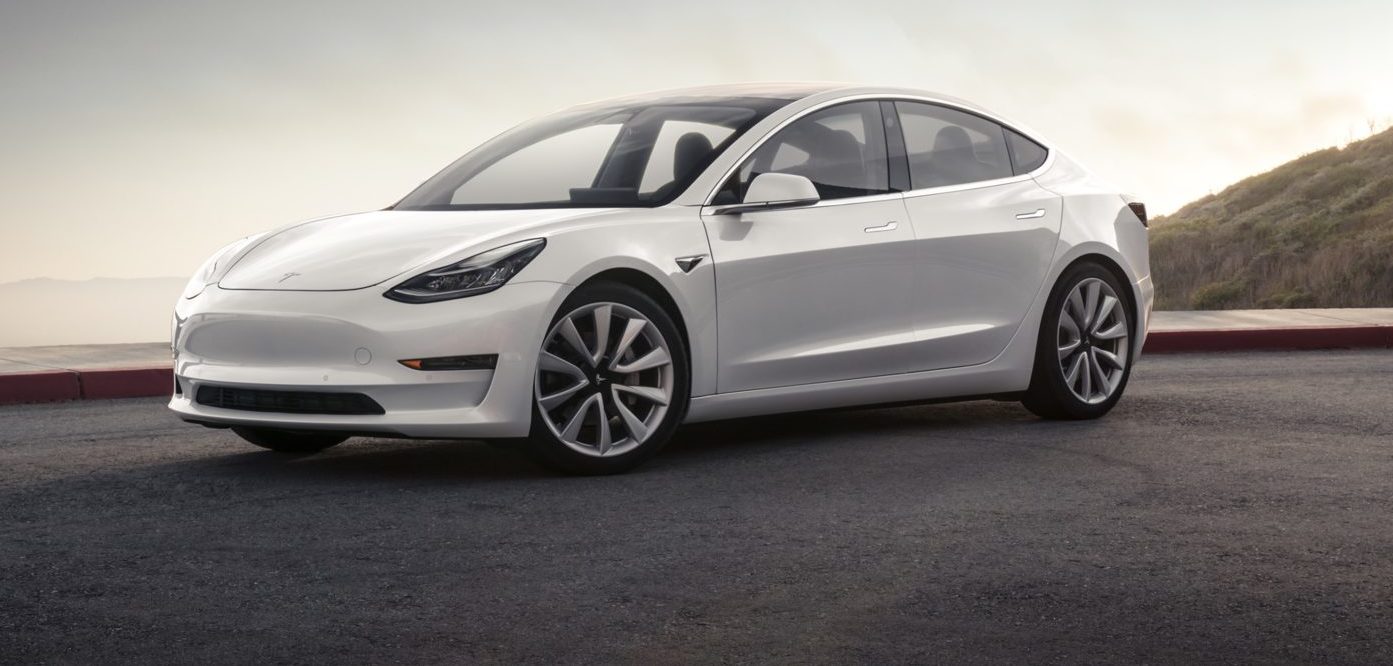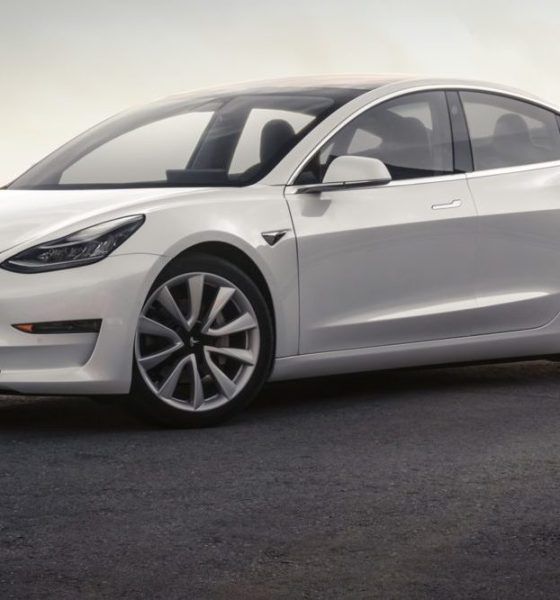

News
Tesla Model 3 will dominate Germany’s e-car market in 2019, says industry expert
With the major challenges in the production of the Model 3 behind the company, Tesla is poised to start delivering the electric sedan to other countries. Among these is Germany, which is expected to begin receiving deliveries of the Model 3 this coming February. These first deliveries, according to a German automotive industry expert, would likely usher in what could very well be the year of Tesla, where the California-based carmaker end up dominating Germany’s e-car market.
In a recent analysis, auto veteran and founder of Germany’s Center of Automotive Research (CAR) at the University of Duisburg-Essen Ferdinand Dudenhöffer stated that 2019 would likely see a massive influx of electric vehicle registrations in the country. Dudenhöffer notes that a large part of these registrations will be due to the arrival of the Model 3, which he expects would help Tesla sell up to 20,000 electric vehicles per year in Germany.
“If it works with the production and an early sales start of Model 3 in Germany, for Tesla altogether up to 20,000 sales in this country in 2019 are possible,” the industry expert wrote in his study.
If Tesla does end up selling as many vehicles as Dudenhöffer expects in 2019, the electric car maker will become Germany’s most successful EV brand. While other EVs and electrified vehicles are available in the market, after all, no other car comes close to the estimated sales numbers of the Model 3. From January to October this year, for example, Dudenhöffer notes that Smart sold 7,030, Volkswagen sold 6,420, and Renault and BMW sold 5,150 green vehicles each. Tesla, which so far only sells the Model S sedan and the Model X SUV in Germany, sold 1,678 cars in the same period.
Dudenhöffer notes that the Model 3’s arrival in Germany will likely get a boost from upcoming, EV-friendly government regulations as well. Currently, employees who use their company cars privately are taxed 1% of the vehicle’s value. Starting January 1, 2019, company cars that are electric will receive half the tax. According to German publication Wirtschaftswoche, electric car drivers can save as much as 200 euros with the upcoming system in place.
The Tesla Model 3 has become a force to be reckoned with in the American auto market. As the electric car maker hits its stride in the production of the Model 3, Tesla has begun an initiative to bring the vehicle abroad. Over the past months, Tesla has brought the Model 3 to several countries in Europe, as well as key markets in Asia such as China and Japan. With each stop in its worldwide tour, the Model 3 was received with much interest.
Local media reports from Europe indicate that Tesla is planning on shipping 3,000 Model 3 per week to the region starting February 2019. Belgian news agency Focus-WTV has noted that the vehicles would be arriving every week in the port of Zeebrugge, located on the coast of Belgium. The vehicles will reportedly be shipped through the services of transportation firm International Car Operators (ICO), which utilizes rapid RoRo (roll-on, roll-off) ships that are capable of loading and unloading cargo quickly.
A video reportedly featuring what could very well be one of the first large shipments of Model 3 sedans to Europe was shared by WTV to Teslarati. The clip, which was taken earlier this month and which features rows of covered electric sedans in ICO’s Zeebrugge site, could be viewed below.

News
Tesla starts showing how FSD will change lives in Europe
Local officials tested the system on narrow country roads and were impressed by FSD’s smooth, human-like driving, with some calling the service a game-changer for everyday life in areas that are far from urban centers.

Tesla has launched Europe’s first public shuttle service using Full Self-Driving (Supervised) in the rural Eifelkreis Bitburg-Prüm region of Germany, demonstrating how the technology can restore independence and mobility for people who struggle with limited transport options.
Local officials tested the system on narrow country roads and were impressed by FSD’s smooth, human-like driving, with some calling the service a game-changer for everyday life in areas that are far from urban centers.
Officials see real impact on rural residents
Arzfeld Mayor Johannes Kuhl and District Administrator Andreas Kruppert personally tested the Tesla shuttle service. This allowed them to see just how well FSD navigated winding lanes and rural roads confidently. Kruppert said, “Autonomous driving sounds like science fiction to many, but we simply see here that it works totally well in rural regions too.” Kuhl, for his part, also noted that FSD “feels like a very experienced driver.”
The pilot complements the area’s “Citizen Bus” program, which provides on-demand rides for elderly residents who can no longer drive themselves. Tesla Europe shared a video of a demonstration of the service, highlighting how FSD gives people their freedom back, even in places where public transport is not as prevalent.
What the Ministry for Economic Affairs and Transport says
Rhineland-Palatinate’s Minister Daniela Schmitt supported the project, praising the collaboration that made this “first of its kind in Europe” possible. As per the ministry, the rural rollout for the service shows FSD’s potential beyond major cities, and it delivers tangible benefits like grocery runs, doctor visits, and social connections for isolated residents.
“Reliable and flexible mobility is especially vital in rural areas. With the launch of a shuttle service using self-driving vehicles (FSD supervised) by Tesla in the Eifelkreis Bitburg-Prüm, an innovative pilot project is now getting underway that complements local community bus services. It is the first project of its kind in Europe.
“The result is a real gain for rural mobility: greater accessibility, more flexibility and tangible benefits for everyday life. A strong signal for innovation, cooperation and future-oriented mobility beyond urban centers,” the ministry wrote in a LinkedIn post.
News
Tesla China quietly posts Robotaxi-related job listing
Tesla China is currently seeking a Low Voltage Electrical Engineer to work on circuit board design for the company’s autonomous vehicles.

Tesla has posted a new job listing in Shanghai explicitly tied to its Robotaxi program, fueling speculation that the company is preparing to launch its dedicated autonomous ride-hailing service in China.
As noted in the listing, Tesla China is currently seeking a Low Voltage Electrical Engineer to work on circuit board design for the company’s autonomous vehicles.
Robotaxi-specific role
The listing, which was shared on social media platform X by industry watcher @tslaming, suggested that Tesla China is looking to fill the role urgently. The job listing itself specifically mentions that the person hired for the role will be working on the Low Voltage Hardware team, which would design the circuit boards that would serve as the nervous system of the Robotaxi.
Key tasks for the role, as indicated in the job listing, include collaboration with PCB layout, firmware, mechanical, program management, and validation teams, among other responsibilities. The role is based in Shanghai.
China Robotaxi launch
China represents a massive potential market for robotaxis, with its dense urban centers and supportive policies in select cities. Tesla has limited permission to roll out FSD in the country, though despite this, its vehicles have been hailed as among the best in the market when it comes to autonomous features. So far, at least, it appears that China supports Tesla’s FSD and Robotaxi rollout.
This was hinted at in November, when Tesla brought the Cybercab to the 8th China International Import Expo (CIIE) in Shanghai, marking the first time that the autonomous two-seater was brought to the Asia-Pacific region. The vehicle, despite not having a release date in China, received a significant amount of interest among the event’s attendees.
Elon Musk
Elon Musk and Tesla AI Director share insights after empty driver seat Robotaxi rides
The executives’ unoccupied tests hint at the rapid progress of Tesla’s unsupervised Robotaxi efforts.

Tesla CEO Elon Musk and AI Director Ashok Elluswamy celebrated Christmas Eve by sharing personal experiences with Robotaxi vehicles that had no safety monitor or occupant in the driver’s seat. Musk described the system’s “perfect driving” around Austin, while Elluswamy posted video from the back seat, calling it “an amazing experience.”
The executives’ unoccupied tests hint at the rapid progress of Tesla’s unsupervised Robotaxi efforts.
Elon and Ashok’s firsthand Robotaxi insights
Prior to Musk and the Tesla AI Director’s posts, sightings of unmanned Teslas navigating public roads were widely shared on social media. One such vehicle was spotted in Austin, Texas, which Elon Musk acknowleged by stating that “Testing is underway with no occupants in the car.”
Based on his Christmas Eve post, Musk seemed to have tested an unmanned Tesla himself. “A Tesla with no safety monitor in the car and me sitting in the passenger seat took me all around Austin on Sunday with perfect driving,” Musk wrote in his post.
Elluswamy responded with a 2-minute video showing himself in the rear of an unmanned Tesla. The video featured the vehicle’s empty front seats, as well as its smooth handling through real-world traffic. He captioned his video with the words, “It’s an amazing experience!”
Towards Unsupervised operations
During an xAI Hackathon earlier this month, Elon Musk mentioned that Tesla owed be removing Safety Monitors from its Robotaxis in Austin in just three weeks. “Unsupervised is pretty much solved at this point. So there will be Tesla Robotaxis operating in Austin with no one in them. Not even anyone in the passenger seat in about three weeks,” he said. Musk echoed similar estimates at the 2025 Annual Shareholder Meeting and the Q3 2025 earnings call.
Considering the insights that were posted Musk and Elluswamy, it does appear that Tesla is working hard towards operating its Robotaxis with no safety monitors. This is quite impressive considering that the service was launched just earlier this year.








